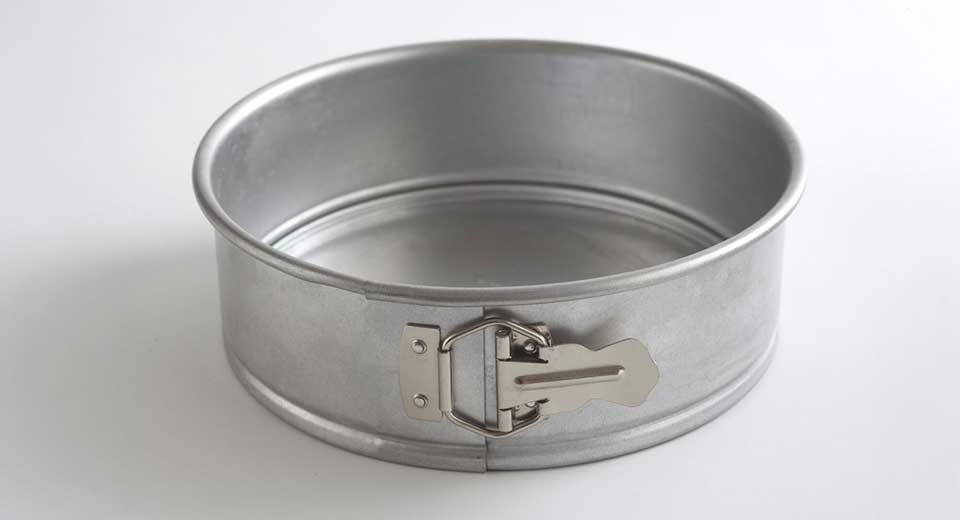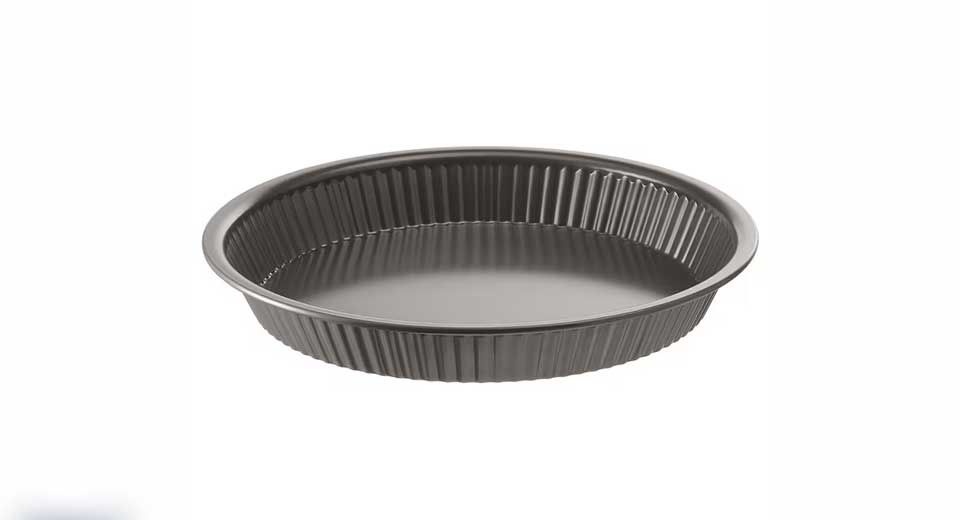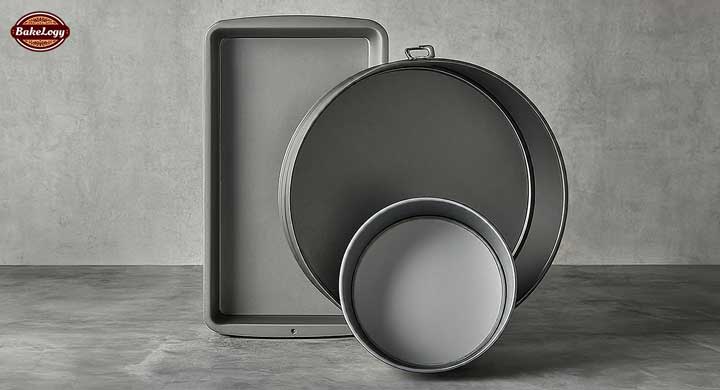When it comes to baking delicate desserts like cheesecakes, tortes, or even savory dishes, a springform pan is an essential tool you’ll want in your kitchen. The unique construction of a springform pan makes it stand out from other pans, offering both versatility and ease in removing your baked goods without damage. In this guide, we’ll cover everything you need to know about springform pans, from their design to the best uses, and some helpful baking tips.
What is a Springform Pan?
A springform pan is a type of cake pan with removable sides. Unlike a standard one-piece pan, a springform pan consists of two parts: a flat base and a latch-secured rim that “springs” open and can be removed after baking. This design allows you to lift the sides away from delicate desserts, making it ideal for items that can’t be easily inverted, such as cheesecakes and deep-dish pies.
How Does a Springform Pan Work?
A springform pan features a buckle or latch on the side of the rim. When closed, it holds the sides tightly in place during baking. Once your cake or dessert is fully baked and cooled, you simply release the latch, and the sides of the pan gently separate from the base. This makes removing your cake or pie easy, leaving it intact and presentable.
Types of Springform Pans
Springform pans come in a variety of materials and sizes to suit different baking needs. Here are the most common types:
1. Non-Stick Springform Pans
Non-stick springform pans are one of the most popular choices among bakers. The non-stick coating ensures your cakes and desserts don’t cling to the sides, making it easier to release your baked goods without damaging them. However, it’s important to avoid using metal utensils, as they can scratch the non-stick surface.
2. Glass Bottom Springform Pans
A glass-bottom springform pan adds versatility because the glass base doubles as a serving platter. It’s perfect for presenting cheesecakes or other desserts straight from the pan to the table. Additionally, the glass is easy to clean and doesn’t absorb odors or flavors.
3. Silicone Springform Pans
For bakers who love flexibility, a silicone springform pan can be an excellent option. Silicone is naturally non-stick and easy to clean. It also handles high temperatures well, but make sure to place the pan on a sturdy baking sheet since silicone can be less stable during transfer.
Choosing the Right Size Springform Pan
Springform pans come in a range of sizes, with the most common being 9 inches in diameter. However, sizes can range from 6 inches to 12 inches depending on the recipe. Here’s a guide on which size to choose:
- 6-inch pans: Perfect for small cheesecakes or mini desserts.
- 9-inch pans: Ideal for most cheesecake and cake recipes.
- 10-inch and larger pans: Best for deep-dish desserts or layered cakes.
Best Uses for a Springform Pan
A springform pan can be used for more than just cheesecakes. Here are some creative ways to use it:
1. Cheesecakes
This is perhaps the most popular use for a springform pan. The delicate nature of cheesecakes requires a pan that can be opened without turning the cake upside down, and a springform pan offers the perfect solution.
2. Tarts and Quiches
Savory dishes like quiches and tarts can benefit from a springform pan, especially when you want to achieve a crisp crust that holds together while serving.
3. Layered Ice Cream Cakes
Because a springform pan has high sides, it’s perfect for creating multi-layered ice cream cakes. You can layer different flavors and fillings, freeze them, and then simply release the pan when it’s time to serve.
4. Deep-Dish Pizzas and Pies
Springform pans can also be used for deep-dish pizzas or pies, where the tall sides provide extra room for thick layers of filling.
Tips for Using a Springform Pan
To get the best results from your springform pan, follow these helpful tips:
- Wrap the outside in foil: Springform pans are notorious for leaking, especially with liquid batters. To prevent spills, wrap the outside of the pan in aluminum foil before baking.
- Grease the pan: Although many springform pans are non-stick, it’s always a good idea to lightly grease the base and sides to ensure easy release.
- Line the bottom: To make transferring your dessert easier, line the base with parchment paper before assembling the pan.
- Check for leaks: Before adding your batter, check that the sides of your springform pan are tightly secured to prevent leaking during baking.
How to Care for Your Springform Pan
Proper care is essential to make your springform pan last. Here’s how to care for it:
- Hand wash only: Most springform pans should be hand-washed, especially non-stick versions, as dishwashers can damage the coating.
- Avoid sharp utensils: When serving from a springform pan, use plastic or silicone utensils to avoid scratching the surface.
- Dry thoroughly: After washing, dry your pan completely to prevent rusting, particularly if you have a metal-based springform pan.
Final Thoughts: Why Every Baker Needs a Springform Pan
A springform pan is an invaluable tool in any baker’s kitchen. Its removable sides make it easy to bake and serve delicate desserts, whether you’re crafting a classic cheesecake, a quiche, or an impressive ice cream cake. With various materials and sizes to choose from, you can find the perfect springform pan to suit your baking needs.
FAQs About Springform Pans
1. What is a springform pan best used for?
A springform pan is ideal for cheesecakes, tarts, quiches, and other delicate desserts or savory dishes that can’t be easily inverted after baking.
2. Can I use a springform pan for regular cake recipes?
Yes, a springform pan can be used for regular cakes, but it’s best for cakes with delicate structures or layered ice cream cakes.
3. How do I prevent leaks in a springform pan?
To prevent leaks, wrap the outside of the springform pan with aluminum foil, especially when baking with liquid batters.
4. Do I need to grease a springform pan?
Even if the pan is non-stick, it’s recommended to grease the bottom and sides to ensure easy release of your baked goods.
5. Can I put a springform pan in the freezer?
Yes, springform pans can be used in the freezer, making them perfect for frozen desserts like ice cream cakes.




